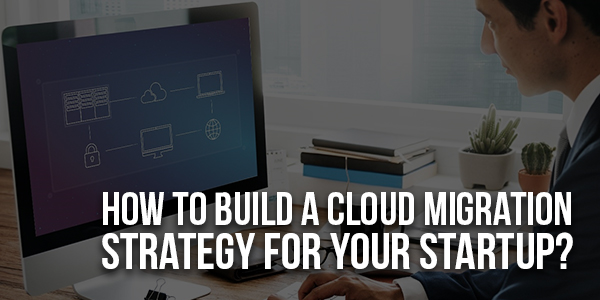
Intuitive start-ups have a ready market all across the globe. Startups that want to succeed globally need to establish a global presence. This requires a cloud migration plan.
The advantages of moving to the cloud are presumably well-known to you.
- Scalability with ease
- Websites that are easy to use
- Protection of personal information
- Lower operating expenses overall
Table of Contents
What Is Cloud Migration?
It moves a company’s digital infrastructure from its existing location (typically on-premise servers or legacy technologies) to the cloud provider’s infrastructure. It is possible to relocate any function or data type that can be performed or updated in the data centre to the cloud, including the actual data, workloads, apps, and other IT resources.
How Might Shift To The Cloud Assist You?
The epidemic has prompted firms to relocate to the cloud to ensure business continuity. 50% of decision-makers believe that cloud computing will become more prevalent. There are several advantages to utilizing cloud computing.
Scalability:
Increasing the number of servers in a data centre may be costly and time-consuming. It’s quick and easy to use a cloud service provider.
Flexibility:
Storage capacity on the cloud is enormous. It also offers customised solutions for businesses. Employees can grow and adapt to their changing needs. Because the cloud has all of the necessary resources and data, employees can collaborate more effectively.
Reliability:
Cloud computing is dependable because even if one of its servers goes offline, we can still access the information and resources stored on other servers. So even if a server goes down, the cloud ensures that data and resources are protected.
Cost:
You don’t need an IT expert to manage the server. Moving your IT infrastructure to the cloud will save money on the required gear. Thus, organisations save money on server upkeep.
What Is A Cloud Migration Strategy?
It’s not as straightforward as turning a switch or pressing a button to move all of your data, apps, and workloads to the cloud. It’s a complex operation that needs advanced preparation and meticulous execution. It necessitates the implementation of a cloud migration plan.
Because organisations migrate to the cloud for various reasons and in varying volumes, no two cloud migrations are the same. You’ll discover multiple categories and designations among the many cloud migration techniques. In our opinion, Gartner’s five categories are a good starting point:
Rehost:
Rehosting is the process of moving a programme to a new hardware environment. This alters the application’s infrastructure. If you utilise a cloud-based application, this approach becomes more accessible.
Refactor:
Using the cloud, your application will be able to take advantage of familiarity and innovation at the same time. It creates a PaaS. As a result, the developers can repurpose the frameworks, containers, and languages they own.
Revise:
Businesses may need to restructure some processes and applications, often with significant code revisions, to reap the benefits of migrating to the cloud.
Rebuild:
Moving an application or service to the cloud is not always possible or appropriate.
Rebuilding a vital function as a cloud-native solution is possible if it cannot make the shift (though one with heavy time and resource costs).
Replace:
Last but not least, Gartner’s cloud migration strategy is a move toward replacing a current application with commercial software that is offered as a subscription service.

Common Cloud Migration Challenges:
Cloud computing investment is increasing rapidly, yet businesses still have difficulty migrating to it despite this. By the year 2020, companies around the world will spend close to $125 billion on cloud-based services. The IT sector will spend $73.9 billion worldwide on cloud infrastructure in 2021.
Lack Of Knowledge:
The need for a cloud computing-savvy workforce has grown significantly over the past several years. Because of the increasing reliance on cloud technologies and the constantly evolving cloud solutions, management has become more complex. As a result, firms must educate and train their IT staff to lessen the burden.
Downtime:
You may temporarily shut down your in-house servers to move data to the cloud. An application’s performance and customer loyalty may suffer if an outage isn’t protected by adequate backup and resource allocation.
Data Loss:
If your data isn’t sufficiently backed up, an interruption might lead to irrecoverable data loss.
In some cases, the risks of data loss and unauthorised access during a move to the cloud can be minimised. A centralised security policy, on the other hand, is necessary. Enforcing compliance and creating a secure access policy throughout the whole infrastructure helps reduce the loss of sensitive data.
How To Build A Cloud Migration Strategy?
Gartner projects that firms will spend $1.3 trillion by 2022 and switch to cloud computing. It is vital to have a cloud migration plan in place to successfully move to the cloud, even though migrating to the cloud offers several advantages, such as dynamic scaling and cost savings.
To begin, let’s have a look at some of the most important aspects of cloud migration planning:
1.) Set Clear Business Objectives For Migration:
It’s time to define your business goals for cloud migration after you’ve selected the appropriate cloud migration model (resilience, continuous deployment pipeline, disaster recovery, etc.). Consider how you might improve the final consumer experience and how you may adapt to competing demands.
2.) Choose Your Cloud Environment:
There are several types of cloud computing platforms. Each of them provides a diverse range of services to meet the needs of various kinds of businesses. As a result, you must identify your cloud computing needs and select a solution that meets those demands.
3.) Decide The Level Of Cloud Integration:
Before shifting to the cloud, choosing between shallow and deep cloud integration is essential. Let’s compare and contrast these two.
- Simplistic use of the cloud (lift-and-shift). Slight cloud migration necessitates modest server infrastructure modifications. On the other hand, cloud service providers do not offer additional services.
- Adding new features and modifying an app’s architecture is “deep cloud integration.”
Choose this approach if you want serverless computing capabilities (services provided by Google Cloud Platform) and data storage options unique to the cloud (Google Cloud Bigtable, Google Cloud Storage).
4.) Migrate Your Apps And Data:
Data location can impact your application performance. If you migrate your data to the cloud, you may decrease performance. In this case, the data is still on-premises, but the service accesses it in the cloud.
5.) Perform Refactoring:
Before going to the cloud, you may need to perform some code reworking. Make that your cloud-based services are up and running in this fashion. Reasons for refactoring code include:
- Ensuring that the programme can handle a variety of operating instances and dynamic scalability.
- Instead of pre-allocating the apps’ cloud resources, define their use dynamically
6.) Test, Execute, Repeat:
“Test, execute, repeat” is a well-known motto in technology implementation. Test your approach for soundness before putting it into action in a natural migration. Then, when you begin to implement, take note of any difficulties, fix them, and then retest.
Conclusion:
A cloud migration strategy involves meticulous preparation, testing, and allocation of resources. Businesses must have a solid foundation. The company may utilise cutting-edge technology to address this issue.

 About the Author:
About the Author:
















Be the first to write a comment.